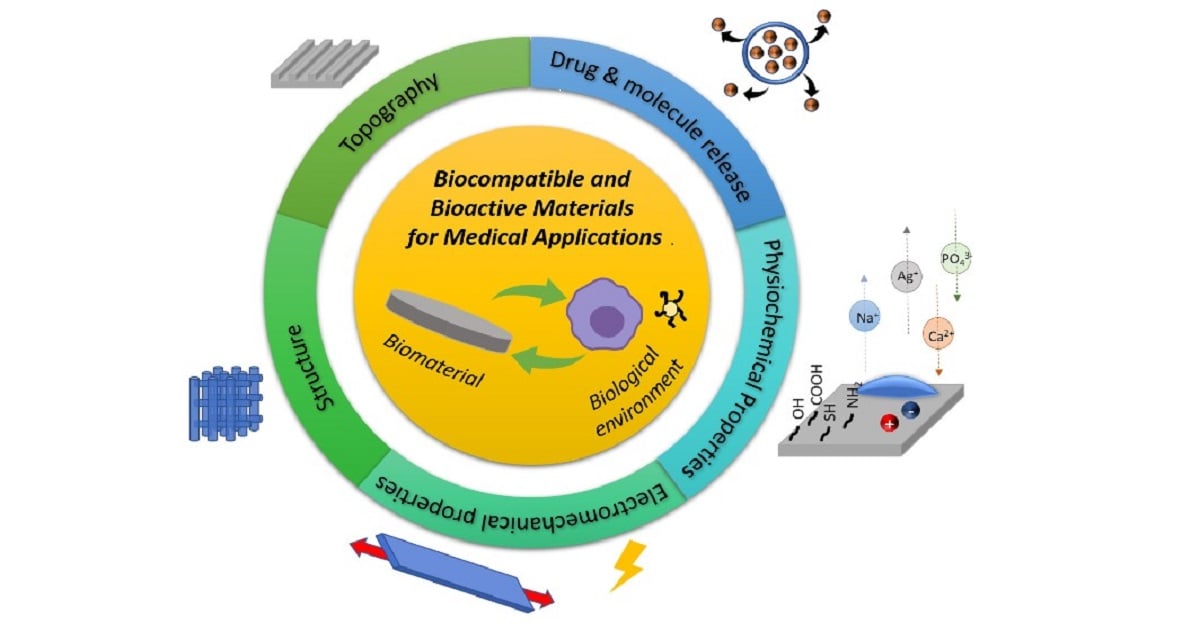Biocompatible and Bioactive Materials for Medical Applications
A special issue of Materials (ISSN 1996-1944). This special issue belongs to the section "Biomaterials".
Deadline for manuscript submissions: closed (10 June 2024) | Viewed by 26592

Special Issue Editors
Interests: protein adsorption; titanium; surface characterization; resorbable implants; bone regeneration; natural molecule coating
Interests: biomaterials; metallic materials; surface modifications; surface functionalization; surface characterizations; coatings; joining; titanium; aluminum foams; natural molecules
Special Issues, Collections and Topics in MDPI journals
Special Issue Information
Dear Colleagues,
Biomaterials have been used for thousands of years to repair and substitute damaged tissues. However, it is just in the last few decades that the progress in materials science and the continuously improved knowledge on the human body’s biology and physiology have allowed us to tackle biologically active materials. Materials engineers and scientists aim to develop materials that can actively interact with the physiological environment, achieving tissue regeneration and restoration by stimulating cells at a molecular level. New technological advancements permit the manufacturing of devices with enhanced properties, both functional and structural, for the stimulation of tissue restoration through topography, mechanical, chemical, and electrical signals. Loading a material with biologically active inorganic or organic compounds, drugs, and biological molecules is a very promising strategy to achieve the time-modulated simulation of cells through on-demand and local release.
This Special Issue is set to highlight the newest advances and research on third- and fourth-generation biomaterials, including, but not limited to, metals, polymers, bioceramics and glasses, composites, drug-loaded nanomaterials, surface modifications and coatings, and strategies to improve implant biocompatibility. Novel manufacturing techniques, advanced surface characterizations, and biological in vitro validation approaches for the assessment of the in vivo performance of biomaterials are also of great value regarding the discussed topic.
We kindly invite you to contribute to this Special Issue with your full papers, reviews, or communications on innovative biocompatible and bioactive materials for tissue contact and regeneration.
Dr. Jacopo Barberi
Dr. Sara Ferraris
Guest Editors
Manuscript Submission Information
Manuscripts should be submitted online at www.mdpi.com by registering and logging in to this website. Once you are registered, click here to go to the submission form. Manuscripts can be submitted until the deadline. All submissions that pass pre-check are peer-reviewed. Accepted papers will be published continuously in the journal (as soon as accepted) and will be listed together on the special issue website. Research articles, review articles as well as short communications are invited. For planned papers, a title and short abstract (about 100 words) can be sent to the Editorial Office for announcement on this website.
Submitted manuscripts should not have been published previously, nor be under consideration for publication elsewhere (except conference proceedings papers). All manuscripts are thoroughly refereed through a single-blind peer-review process. A guide for authors and other relevant information for submission of manuscripts is available on the Instructions for Authors page. Materials is an international peer-reviewed open access semimonthly journal published by MDPI.
Please visit the Instructions for Authors page before submitting a manuscript. The Article Processing Charge (APC) for publication in this open access journal is 2600 CHF (Swiss Francs). Submitted papers should be well formatted and use good English. Authors may use MDPI's English editing service prior to publication or during author revisions.
Keywords
- biomaterials
- tissue engineering
- scaffolds
- bioactive coatings
- manufacturing of biomaterials
- surface modifications of biomaterials
- biomaterials characterization
Benefits of Publishing in a Special Issue
- Ease of navigation: Grouping papers by topic helps scholars navigate broad scope journals more efficiently.
- Greater discoverability: Special Issues support the reach and impact of scientific research. Articles in Special Issues are more discoverable and cited more frequently.
- Expansion of research network: Special Issues facilitate connections among authors, fostering scientific collaborations.
- External promotion: Articles in Special Issues are often promoted through the journal's social media, increasing their visibility.
- e-Book format: Special Issues with more than 10 articles can be published as dedicated e-books, ensuring wide and rapid dissemination.
Further information on MDPI's Special Issue policies can be found here.







